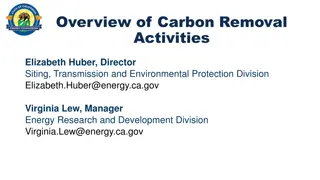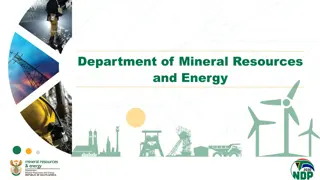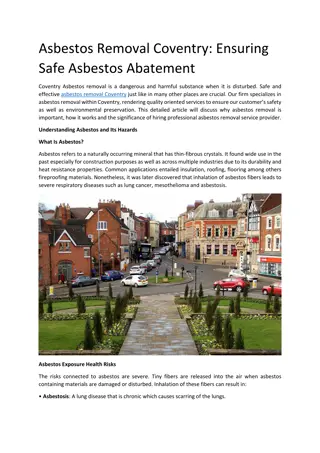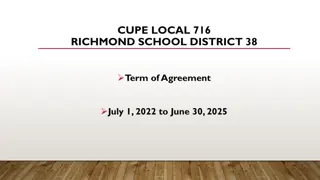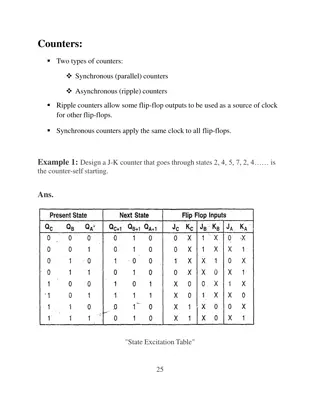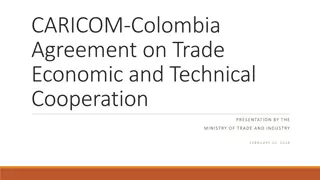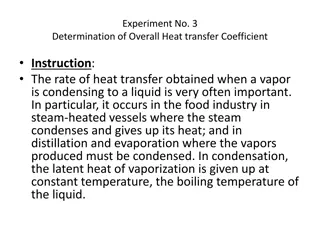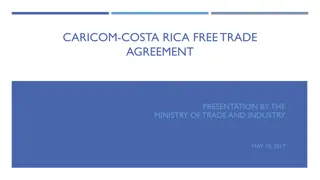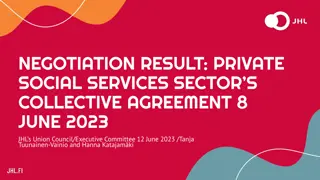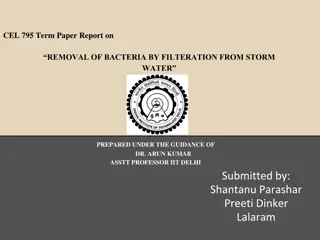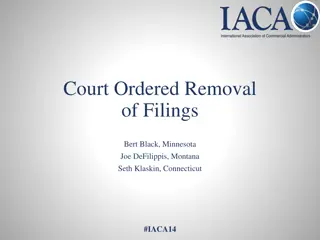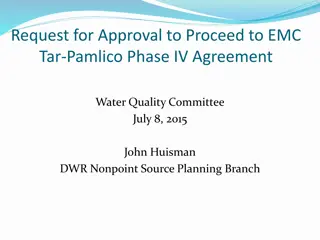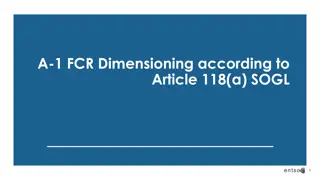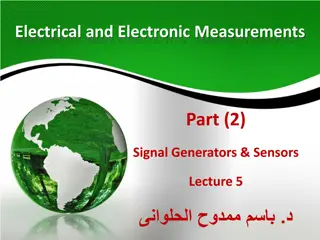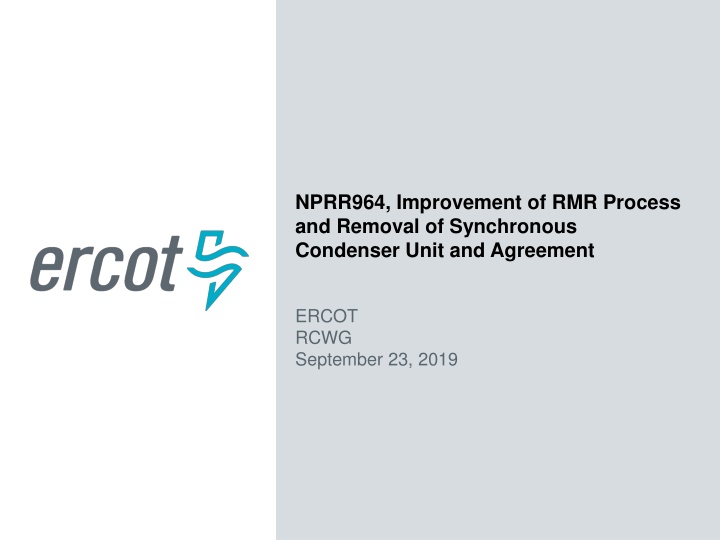
Improvement of RMR Process and Removal of Synchronous Condenser Unit Agreement
Enhancing the RMR process by eliminating the Standard Form Synchronous Condenser Agreement and redefining the Synchronous Condenser Unit in ERCOT protocols. This initiative addresses the absence of a compensation scheme and outlines the historical context of these agreements within the energy sector.
Uploaded on | 0 Views
Download Presentation

Please find below an Image/Link to download the presentation.
The content on the website is provided AS IS for your information and personal use only. It may not be sold, licensed, or shared on other websites without obtaining consent from the author. If you encounter any issues during the download, it is possible that the publisher has removed the file from their server.
You are allowed to download the files provided on this website for personal or commercial use, subject to the condition that they are used lawfully. All files are the property of their respective owners.
The content on the website is provided AS IS for your information and personal use only. It may not be sold, licensed, or shared on other websites without obtaining consent from the author.
E N D
Presentation Transcript
NPRR964, Improvement of RMR Process and Removal of Synchronous Condenser Unit and Agreement ERCOT RCWG September 23, 2019
Removing Standard Form Synchronous Condenser Agreement and definition of Synchronous Condenser Unit from existing Protocols Synchronous condensers only provide reactive power. No existing compensation or performance evaluation scheme exists in the Protocols for a Synchronous Condenser Unit providing service pursuant to the Standard Form Synchronous Condenser Agreement. The Protocols also do not describe how/when ERCOT would enter into a Synchronous Condenser Agreement. 2 PUBLIC
Removing Standard Form Synchronous Condenser Agreement and definition of Synchronous Condenser Unit from existing Protocols, cont d ERCOT does not appear to have ever had a need for the Standard Form Synchronous Condenser Agreement. The Standard Form Synchronous Condenser Agreement, and the defined term Synchronous Condenser Unit, appear to be a carryover from the Zonal Protocols. In the Zonal Protocols, grey-boxed language existed describing a compensation scheme for Synchronous Condenser Service that would utilize the Standard Form Synchronous Condenser Agreement. (See PRR278 and PRR640). However, that language was never implemented and the compensation scheme for Synchronous Condenser Service was not carried over to the Nodal Protocols. 3 PUBLIC
Existing RMR Process To the extent a retiring generation unit may be found to be necessary for voltage support to maintain System reliability, ERCOT could utilize the existing RMR process to contract with the Resource Entity, if necessary. By definition, RMR Service can include voltage support: Reliability Must-Run (RMR) Unit: A Generation Resource operated under the terms of an Agreement with ERCOT that would not otherwise be operated except that it is necessary to provide voltage support, stability or management of localized transmission constraints under Credible Single Contingency criteria where market solutions do not exist. 4 PUBLIC
Existing RMR Process Contd The existing Standard Form RMR Agreement allows ERCOT to contract with a retiring unit found to be necessary for voltage support by contracting for real energy and reactive power. The current RMR Agreement and Protocol language, however, do not appear to expressly contemplate that ERCOT would contract with a retiring generation unit to provide only reactive power. For example, the current RMR Agreement contemplates that an RMR Unit will be providing capacity in MW under the Agreement, not MVARs, and ERCOT is required to contract for the entire capacity of an RMR Unit. 5 PUBLIC
Existing RMR Process Contd Existing references to the defined term Synchronous Condenser Unit in the RMR Agreement are confusing since that term is defined as a unit providing service under the Standard Form Synchronous Condenser Agreement. The existing RMR process also requires ERCOT to consider alternative solutions via the Must Run Alternative (MRA) process However, the Protocols do not permit a unit that can only provide reactive power to participate as an MRA (e.g., current Protocols require any MRA to provide at least five (5) MW of capacity ). Further, there is no compensation scheme or evaluation process for a reactive-power-only MRA in current Protocols. 6 PUBLIC
Next Steps To the extent stakeholders deem it prudent to allow for the possibility of ERCOT entering into an RMR or MRA Agreement with an entity to provide only reactive power, the Protocols (including the RMR and MRA Agreements) should be revised to specifically address this possibility. ERCOT believes this language should not be limited to synchronous condensers, but rather should be drafted broadly enough to cover any unit capable of providing reactive power. 7 PUBLIC
Next Steps, contd Because it is unlikely that reactive devices could be installed for RMR/MRA purposes more quickly than a TDSP could install a reactive device, it is not clear there would ever be a situation where a reactive-power-only RMR/MRA would makes sense. Nevertheless, to the extent there is a desire to create a scheme in the Protocols for compensating and evaluating reactive-power-only RMRs and/or MRAs, ERCOT recommends that this be handled in an NPRR separate from NPRR964, as working through the issues necessary to craft such language are potentially complex and may take some time. 8 PUBLIC
Questions 9 PUBLIC

